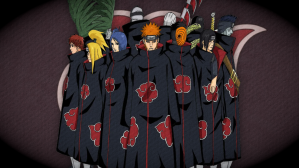When Krypton first launched, the description from writer David Goyer was something along the lines of “200 years before Man of Steel.”
Videos by ComicBook.com
While the official verdict eventually came down that Krypton is not a part of the DC Extended Universe, Goyer’s fingerprints are all over the thing, and there is a sense that once Joss Whedon took over Justice League and Wonder Woman began to dictate the course and future of the DC movies, SYFY’s new series became one of the last outposts that Snyder and Goyer fans can look at and say “yeah, this feels like my thing.”
If you have not yet seen it, Krypton is a new series on SYFY that centers on Seg-El, the grandfather of Superman, as he nears his twenty-third birthday and prepares to enter a new phase in his life. That evolution is interrupted by the arrival of Adam Strange, a human from the future, who tells him that a powerful being known as Brainiac has come to destroy Krypton, and if he succeeds, Superman will never be born and the universe is doomed.
Without a Man of Steel to help them, then, Adam Strange has to team with Seg…and the whole time they are trying to save the planet, they can’t actually tell anyone since the city of Kandor, where Seg lives, is ruled by a theorcatic dictator known as the Voice of Rao who considers it heresy punishable by death to believe in life beyond Krypton.
If you are one of those DC movies fans who has not yet seen Krypton, here’s a little taste of what you’re missing.
Krypton airs on SYFY, Wednesday nights at 10 p.m. ET/9 CT.
Tone

Zack Snyder’s distinctive tone was a divisive point for fans and critics of Man of Steel and Batman v Superman: Dawn of Justice, with the dam of pressure mounting against Snyderism seeming to burst when David Ayer tried and failed to mimic Snyder’s tone with Suicide Squad.
With Justice League, there is a visual continuity with Batman v Superman and Man of Steel, but in terms of characterization, the DC movies have started to drift in the direction of Marveldom.
A gritty, grounded world filled with painstaking attention to small details, elaborate set design, and a hidden history of which fans have only just seen the tip of the iceberg is a good way to describe Krypton — and a perfect way to describe the “Snyderverse,” where years later fans are still regularly finding Easter eggs in Batman v Superman that hadn’t been evident before.
Krypton‘s society might feel like Man of Steel‘s Krypton in a superficial way, but what is more significant is the way the look and feel of the series carry over many of the best elements from the DC films.
Hope
The sigil of the House of El is a family crest.
No, it’s a symbol of hope.
Whatever it is, it’s not an S — unless John Byrne is writing the story — and Krypton seems to be the place fans might go to address the apparent disparity between the House of El’s crest being universally accepted as “hope.”
The meaning, it seems likely, is largely symbolic. There are no glyphs in the version of written Kryptonian seen on the show, but rather a 1:1 alphabetical cypher. That means “hope” would be a four-character combination, not a single character on a field.
The pilot, though, offers this idea: the House of El will lead a rebellion against tyranny. The fact that the guilds have glyphs that are not the word written out, and so do certain families who have rank, likely means that when the El sigil is rendered legal once again, the once-fallen emblem could mean something different to the masses than just “El,” specially in light of what the Els will apparently provide to the world at large.
Nyssa Vex

Did you like Faora-Ul, the badass female warrior who stood alongside General Zod in Man of Steel?
Well, in Krypton you will meet Nyssa Vex, played by Wallis Day. One of the most interesting characters in the series, she feels like the natural extension of the Faora archetype.
While Nyssa is not the fighter that Faora is (as far as we know), Nyssa has the black-clad, short-haired badass thing down. Whether it’s Faora or Ursa (from Superman II) that you associate with this particular Kryptonian archetype, Nyssa plays on those expectations and subverts them a little bit, too, since she is clearly less by-the-book than the soldiers in Zod’s command (in either universe).
Day’s character is likable and relatable — at least when she wants to be — and devious in a way that Faora and Ursa never were. That makes her a potentially more interesting character for a longer-form story, because while both of the feature-film villainesses functioned essentially to be a dangerous physical threat, their allegiance to Zod made them little more than an extension of his will and intellect.
Nyssa is the version of Faora that would have had to be around if there was a feature film set on Krypton: She’s not just physically intimidating, but intellectually intimidating, too, with political savvy to boot.
All we can see of stars are their old photographs

When Man of Steel began, David Goyer infused Krypton with a personality no screenwriter had ever managed to before.
While the movie tends to get a lot of hate now, especially from those who decided they liked Batman v Superman even less, remember that Man of Steel had a pretty decent reception from audiences at the time and there was a not-insignificant number of people online asking about the possibility of seeing more of Goyer’s Krypton, with Russell Crowe saying he was keen to do them as well.
It was never likely that audiences were going to see a big-screen continuation of the Krypton story, though, in part because it would be difficult to tell a Krypton story that did not involve Superman directly, but had enough broad appeal to justify spending $75 million or more making a feature film.
“All we see of stars are their old photographs,” Doctor Manhattan says in Watchmen, a movie based on which was Zack Snyder’s first DC work. And that is, in a way, what fans of the DCEU can see Krypton as: an old photograph, seen through the haze of time and space, and indicative of how Goyer views Krypton’s backstory.









